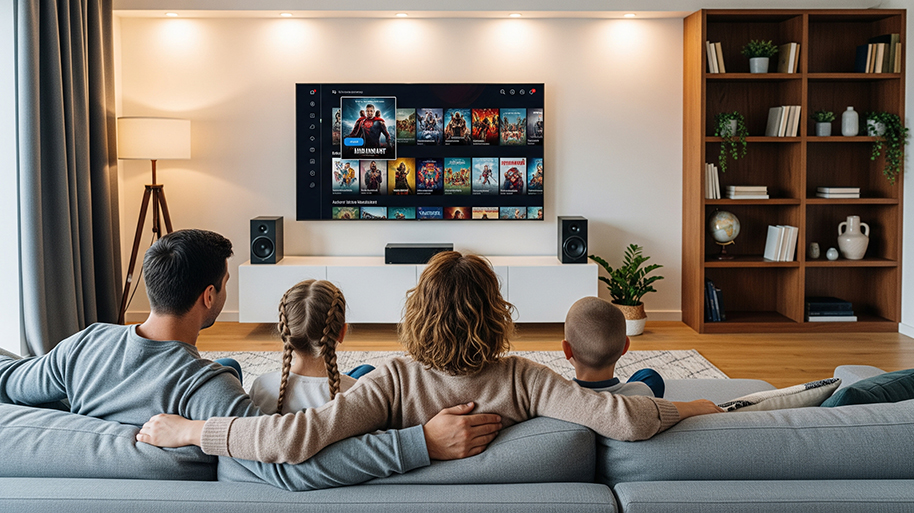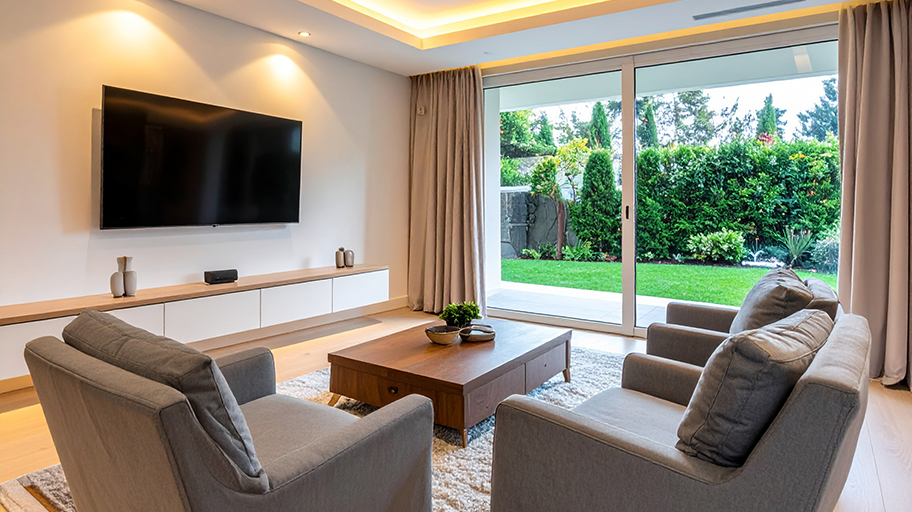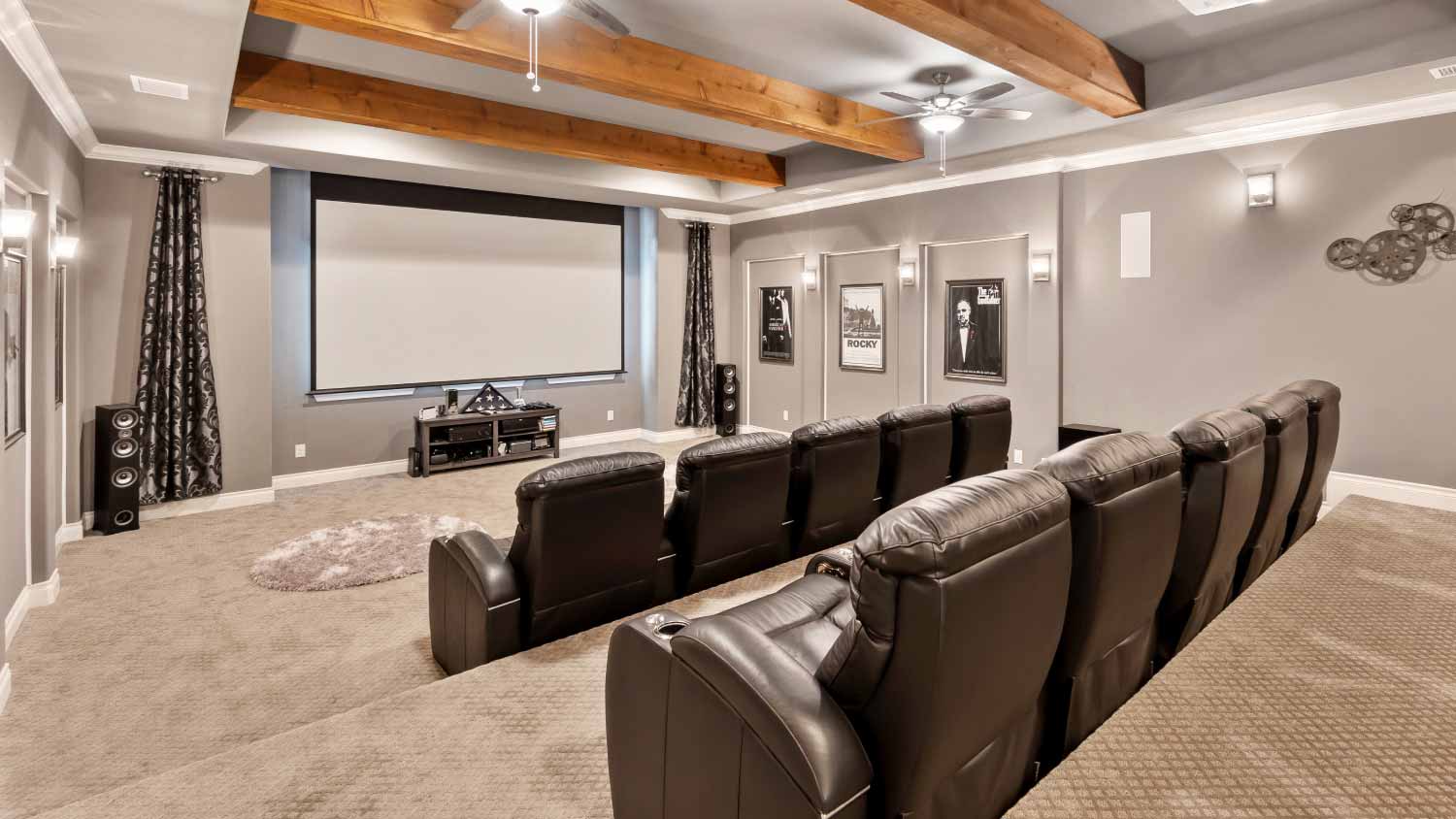
Find out what impacts TV repair cost. Learn average prices, key cost factors, and how to save when repairing your TV.
Family movie night is about to get a whole lot better


If your movie nights or “Love Is Blind” binges could use a little love, a TV upgrade might be just what you need. But don’t just go for the most expensive unit on the shelf. From 4K to 8K TVs, there are a lot of considerations that go into buying the perfect television.
To pick the right TV for your home, look at the location, quality, and purpose of the TV. Here are some tips to make it easier.
While the first TVs were no larger than 12 inches or so, you can now routinely find TVs as large as 85 inches or more at your local electronics store. To determine the right size for your home, consider how far away you plan to sit from the TV. Generally, the further away you are, the larger the screen you’ll want.
If you’re looking to put a TV in the living room, most households will choose a 55-inch to 65-inch option. If you have a dedicated movie theater room, you might want to choose something larger.
Refresh rate refers to the number of times the screen refreshes to display a new image. These rates actually do matter, as the higher the refresh rate, the more frames a second a screen is able to show you.
Most TVs will fall somewhere between 60 Hertz (Hz) and 120Hz, though you may find some TVs still in the 30Hz range or hitting upwards of 160Hz. For those looking to enjoy movies or TV shows, you’re not going to need anything higher than 60Hz, as most movies shoot at 24 frames per second (FPS) and TV shows will shoot at either 30 or 60 FPS.
If you’re into gaming and sports, you may want to opt for 120Hz or higher, as games often have no cap on FPS and sports enthusiasts tend to find the smoothest picture at this refresh rate.
Because refreshing the screen shows the newest frame available, having a high FPS paired with a high refresh rate allows for the smoothest picture possible. Even when shows or movies are shot at a lower FPS, you may still see an increase in smoothness with a higher refresh rate, if you so desire. A higher refresh rate typically relates to a smoother picture, though there are other factors such as signal strength as well as the processing power of a video game console.
While there are four resolutions to choose from on the TV market, the reality is that most of these options fall into the 4K resolution and are over 43 inches in size. A 4K TV (Ultra High Definition) means there are 3,840 by 2,160 pixels on the screen, allowing for more color depth and clarity when viewing media compared to lower resolutions such as 1080p or 720p. So if you’re looking for a smaller TV in a kid's room or maybe a gym, you’re likely going to go for a 1080p TV.
If you’re someone who finds they need to hook up an external streaming device to stream movies, tv shows, or live sports, you can save yourself an HDMI slot and opt for a smart TV. These TVs often have an entire interface allowing you to download your favorite streaming services without plugging in an external streaming device.
But if you’ve already purchased your fair share of streaming devices, it’s best not to let your money go to waste, and you might want to opt for a standard TV. These TVs won’t compromise when it comes to resolution or refresh rate, but you may lose out on a valuable HDMI slot.
There are now plenty of subcategories for TVs and how they’re delivering the picture to you. You now have LED, OLED, QLED, and Mini-Led TV’s all of which sound the same but may produce drastically different results.
The majority of TVs on the market will fall into the LED category, bringing together a solid mix of color and brightness. For those looking for more color accuracy and deeper blacks, OLED might be the right choice for you. But if you’re someone dealing with a lot of glare on your TV, you might want a QLED or Mini-LED to increase the brightness to fight off the glare.

It was once a rarity to see a TV hanging from the wall, but it is now as easy as calling a TV mounting service near you and they can have your TV up and ready to go within an hour or two. Mounting a TV allows you to free up space on your entertainment system and even increase how far back you can sit while still getting the best possible viewing experience.
The downside to mounting a TV is often a decrease in sound quality. A TV often relies on your entertainment system bouncing the sound to reach you effectively. The further away the TV is from the entertainment system, the more likely you are to notice a decrease.
It’s often overlooked, but you shouldn’t forget about the back of the TV and how much input/output (I/O) the tv contains. Most TVs have around 3 to 4 HDMI ports and a possible Display Port. Most TVs have also done away with older analog displays such as Component and Composite, so if you have any devices still utilizing this older system, you may need to buy a converter.
Ensure your potential TV has enough I/O to support all of your current devices and any possible future devices.
TVs have trended to be as thin as possible, but with this trend in slimming down, there’s needed to be some sacrifices, mainly in the category of sound. You should look into reviews around the sound quality of a TV if you do not currently have a surround sound system. Though you may want to pick out surround sound speakers if you truly want an immersive viewing experience.
Whether you’re mounting the TV in the bathroom or looking to hook up a TV outdoors for a date night or game day, determine where you’re putting the TV in the room before purchasing. Measure out the wall or entertainment system to determine the size of the TV matches the room.
From average costs to expert advice, get all the answers you need to get your job done.

Find out what impacts TV repair cost. Learn average prices, key cost factors, and how to save when repairing your TV.

Discover the average surround sound installation cost, key price factors, and tips to save. Get expert insights to plan your home audio project.

Explore home theater installation costs. Get detailed breakdowns, cost factors, and expert tips to help you budget and plan your dream home theater.

Discover the cost to install a projector and screen in your home, including price ranges, installation factors, and tips to help you plan your home theater project.

From a cozy living room to a cinematic experience, knowing what size of TV you need can enhance your space. Use this guide to shop for the perfect TV.

Discover the average home theater repair cost, key price factors, and tips to save. Get transparent estimates and plan your repair with confidence.